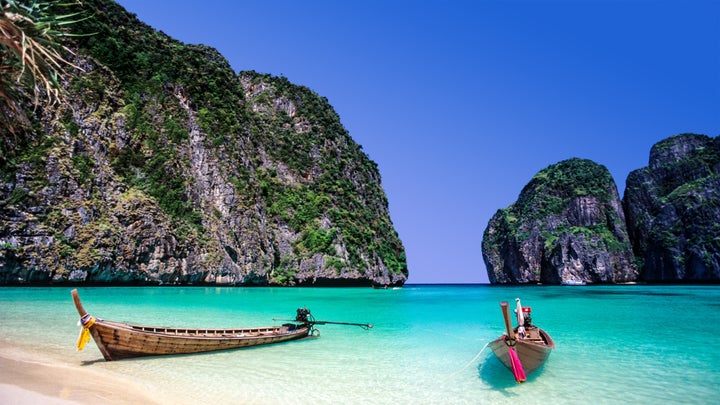Maya Bay, the beach featured in Leonardo DiCaprio’s film The Beach, will remain closed until 2021 to give it time to recover from environmental damage.
The bay on the Thai island of Koh Phi Phi Leh was made famous after its iconic appearance in the 2000 movie – based on Alex Garland’s book – but this led to a surge in tourism – at its peak, the beach had 5,000 visitors a day.
As a result, Maya Bay became severely polluted and 90% of surrounding coral reef died. It was temporarily closed in 2018, with a view to keeping it “off limits” for a couple of months. But this has now been extended for another two years.
[Read More: Thailand’s Maya Bay shuts – here are five other beaches bearing the environmental impact of tourism]

Officials say the additional closing time will give Maya Bay’s ecology time to recover – and the signs are already encouraging: since the closure last year, black-tip reef sharks have been sighted swimming in the waters of the bay.
When the bay does reopen, it’s reported that the number of visitors will be more closely restricted and boats will be banned from mooring within the bay itself.
But local tourism operators have said they rely heavily on the attraction to make money. Wattana Rerngsamut, head of the local tourism association, told AFP there should be local discussion so people can continue to make a living.

[Read More: Meet the volunteers who took part in the UK’s biggest beach clean]
Maya Bay isn’t the only beach that has suffered as a result of tourism. Boracay in the Philippines – a tiny island south of Manila – was described by President Rodrigo Duterte as a “cesspool” before he imposed a six-month closure last year.
Kuta beach in Bali has also been affected by a “trash emergency”, as declared by the government. Plastic rubbish left on beaches there have been increasingly swept up into the sea during rainy season.
Even the beaches on the Galapagos islands, which are 500 miles away from the nearest landmass, have been affected by humans. Locals have reported a rise in litter and a struggle to keep up with the requirements of tourists, as the areas become more developed towards an expanding tourism industry.